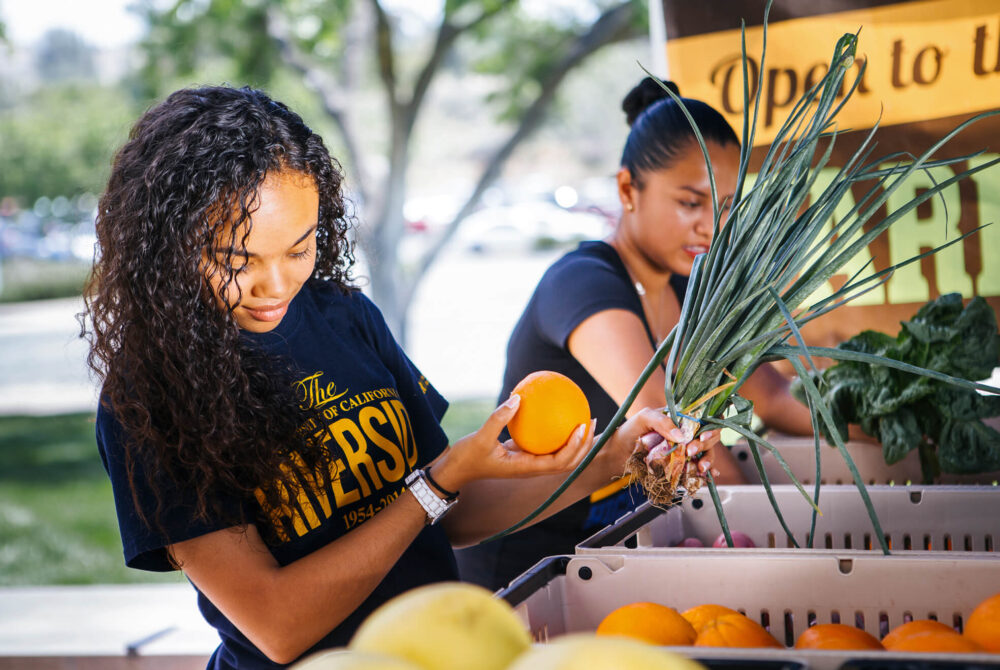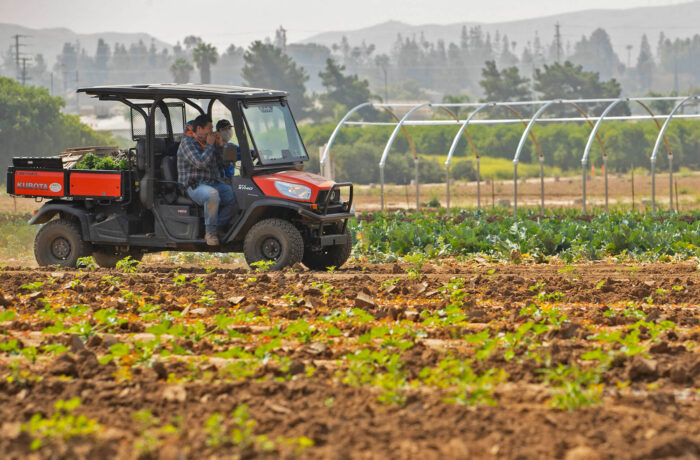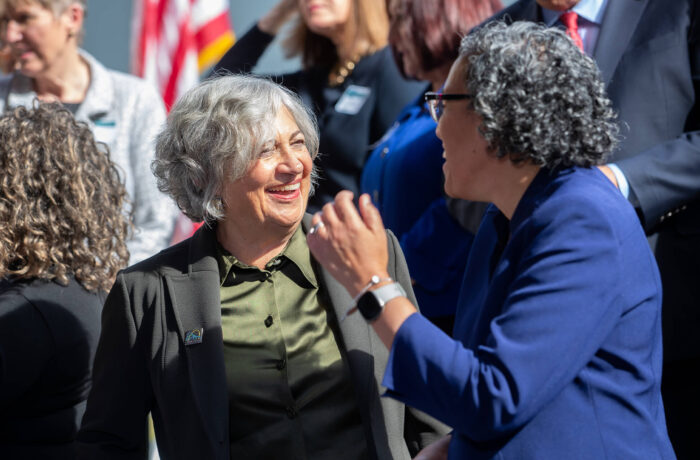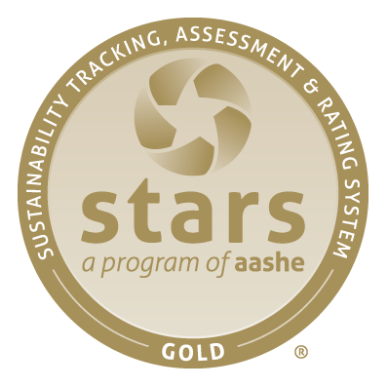This year marked the largest expansion of LEED certified buildings on campus with the addition of 811,095 square feet. Five buildings gained Gold certification and one building received Silver certification. Students enjoy the new buildings, which include student housing in North District and Dundee, along with a new two-story dining hall called Glasgow.
In addition to the new LEED buildings, the campus completed its first rooftop solar project on three buildings, the Student Recreation Center South, Student Services Building and the Lothian Residential Hall. This brings the total campus solar generation to approximately 8.5 megawatts.
This year also marked a major milestone as the campus welcomed a new neighbor, the California Air Resources Board, which opened its regional headquarters on an 18-acre site gifted by UC Riverside. This partnership will lead to innovative collaborations on critical air quality issues facing the region and the state.
While the 2021–22 fiscal year saw students return to campus, a winter COVID-19 surge forced the campus to return to full remote for the first month of the year and ultimately led many to continue fully remote for the entire winter quarter. This change in the middle of the year made some aspects of sustainability initiatives and data difficult to pursue.

CLIMATE PROTECTION – EMISSIONS
2021 data will be finalized after verification by a third party by early 2023.
Three new solar rooftop projects came online in the later part of the year, helping reduce the amount of grid electricity consumed and bringing the campus total solar generation to approximately 8.5 megawatts. A campus project to insulate equipment at the Central Plant helped increase efficiency of natural gas consumption. Overall, UC Riverside saw similar greenhouse gas reductions in 2021 as in 2020 due to the impacts of the COVID-19 pandemic. For the calendar year 2021, the campus was fully remote except for a few months in the fall.
ENERGY – RENEWABLE energy use
ENERGY USE INTENSITY (EUI)
UC Riverside saw a decrease in its EUI in the calendar year 2021.
FOOD
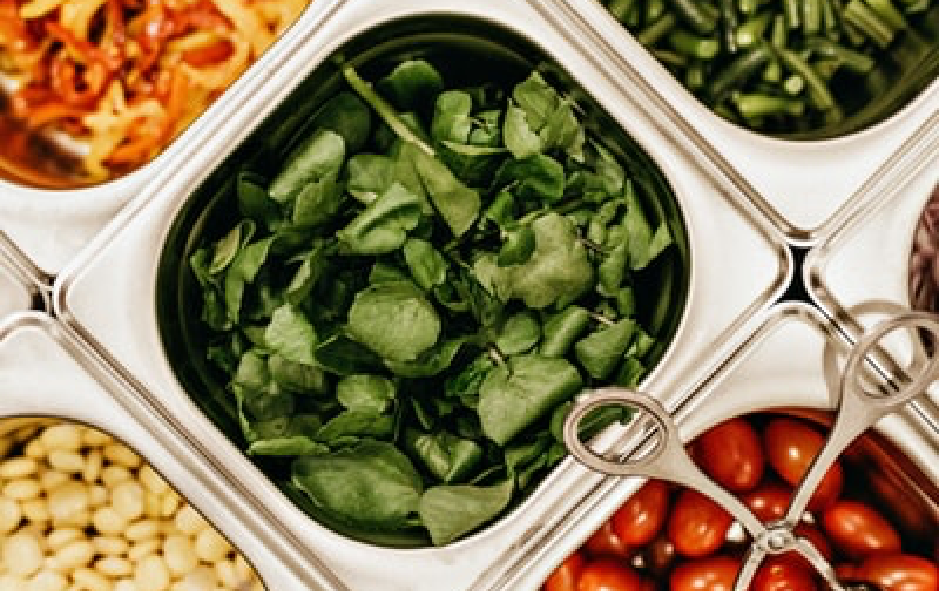
of food and beverage purchases met sustainability criteria ($327K)
of food and beverage purchases were plant-based ($1.8M)
The campus increased its percentage of plant-based food purchases from 18.95% to 29.5% this year. The campus increased the percentage of sustainable food and beverage products purchased from 3% last year to 5.3% this year.
Green building
The 2021–22 fiscal year marked the largest expansion of LEED certified buildings on campus ever, nearly doubling the amount of square footage of LEED buildings from the previous year to a new total of 1,880,482 square feet. The campus now has a total of 15 LEED buildings with one achieving Platinum, 11 achieving Gold, two achieving Silver, and one Certified.
1 Platinum, 11 Gold, 2 Silver and 1 Certified
Total number of LEED Certifications
procurement

green spend on electronics (64%)
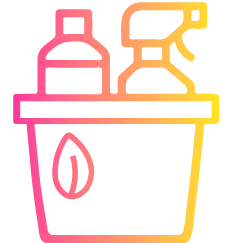
green spend on cleaning supplies (48%)

green spend on indoor office furniture (92%)

green spend on office supplies (35%)
The University resumed reporting on green spend, as defined in the Sustainable Procurement Guidelines, in fiscal year 2021–22 and reached out to suppliers for spend data in four product categories for this year’s report.
Green spend is defined as meeting preferred or minimum criteria in UC’s Sustainable Procurement Guidelines.
Suppliers reporting: Electronics (8), Furniture (3), Cleaning supplies (6), Office supplies (3).
UC Systemwide Spend Analytics category data provided by CalUSource.
Sustainable Building & Laboratory Operations
With the COVID-19 restrictions in place at UC Riverside, the campus decided to put the Green Labs program on hold. This was for health and safety reasons, along with a sensitivity to the researchers’ limited time and constraints to conduct their vital work. The campus looks forward to restarting this program and working with labs and researchers in the coming year as the campus resumes in-person operation.
total assessed green laboratories
Transportation

of employees are utilizing alternative commuting methods

EV charging ports
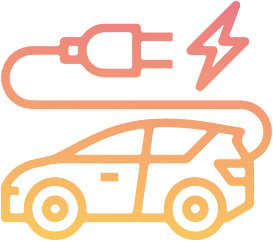
of light-duty vehicles acquired in fiscal year 2021–22 were electric (zero-emission) or hybrid vehicles
This year saw similar reductions in transportation emissions in both commute and flight emissions as last year due to the COVID-19 pandemic. According to campus commute surveys, 71.47% of the campus population was working or taking classes remotely. The campus added six new battery-electric low-speed vehicles to the campus fleet this year. The campus has also made strides in increasing the electric vehicle charging infrastructure to 95 Level 1 chargers and 62 Level 2 chargers.
WATER
*Based on a 3-year average of fiscal years 2005-08.
Water usage remained relatively similar to the previous year as compared to pre-pandemic years. In 2022, the state and local agencies began increasing restrictions on water usage due to the drought, and the campus has implemented various protocols to meet the necessary reductions.
ZERO WASTE – GENERATion
*These numbers might include a small amount of incineration that is being phased out.
The 2021–22 fiscal year saw an increase in total municipal solid waste generated back to levels similar to pre-pandemic levels given that more of the campus population returned. This did lead to a reduction in the total allowable municipal solid waste generated per person per day, which returned 0.6 pounds for this year compared to 1.7 pounds last year.
ZERO WASTE – DIVERsion
UC Riverside was able to divert 50% of campus-generated waste from landfills, representing a 44.1% reduction over the baseline year. This year saw an increase in both recycling (from 280 tons to 653 tons) and organic materials collected (from 45 tons to 199 tons).
Awards
UC Riverside achieved a Gold rating from the Association for the Advancement of Sustainability in Higher Education’s Sustainability Tracking, Assessment and Rating System (AASHE STARS). This rating system assesses the broad spectrum of sustainability initiatives and programs across campus, with sections covering academics, engagement, operations, and public administration. Academically, 65.91% of campus departments conduct research that is engaged in sustainability topics. A full list of awards is featured on the UC Office of the President’s website.
 Sustainability Annual Report 2022
Sustainability Annual Report 2022